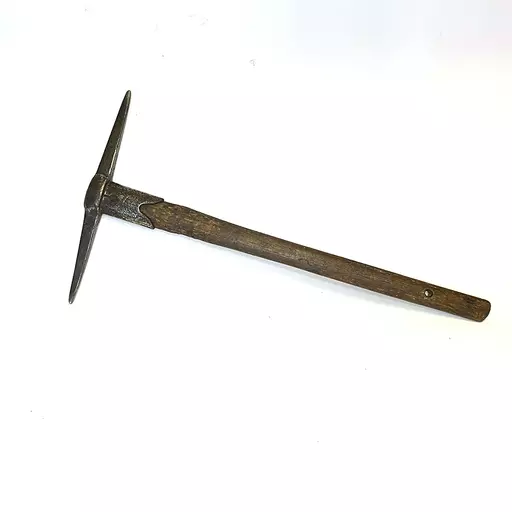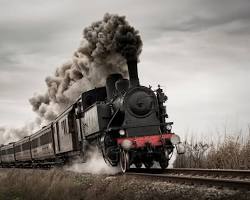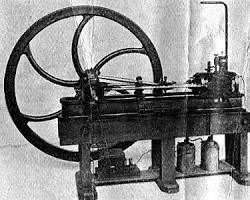What was Coal Mining like in the United Kingdom?
Introduction
Coal mining is a dangerous and difficult job, but it was once one of the most important industries in the world. Coal was used to power steam engines, locomotives, and ships, and it was also used to make steel and other products.
Coal mining played a vital role in the Industrial Revolution, which transformed the world from a largely agrarian society to an industrialised one. During this period, coal consumption increased dramatically, as factories and mills began to use steam engines to power their machinery. Coal was also used to power steam locomotives and ships, which revolutionised transportation and trade.
Coal mining was also essential to the development of new industries, such as steelmaking and iron smelting. Coal was used to heat the furnaces that melted iron ore and carbonised iron, turning it into steel. Steel is a strong and durable metal that is used in a wide variety of products, from cars and bridges to buildings and appliances.
Coal mining was a dangerous and unhealthy job, but it was also one of the few jobs that was available to poor and working-class people. Miners often worked long hours in cramped and dangerous conditions. They were at risk of accidents such as cave-ins, explosions, and falls from heights. Miners also suffered from respiratory problems caused by inhaling coal dust.
Despite the dangers, coal mining was a vital part of the economy for many years. In the early 20th century, coal miners were among the most powerful and organized workers in the world. They fought for better wages and working conditions, and they played a leading role in the labor movement.
The coal industry began to decline in the mid-20th century, as other energy sources such as oil and natural gas became more widely available. However, coal mining is still an important industry in many parts of the world today.
What was life like for children in the mines?
Children in the mines during the Industrial Revolution had a very difficult life. They often started working at a very young age, as early as 5 or 6 years old. They worked long hours, up to 12 hours a day, for six days a week. The mines were dark and damp, and the air was often filled with coal dust. Miners were at risk of accidents, such as cave-ins and explosions. Children were particularly vulnerable to accidents because they were smaller and weaker than adults.
Children were also used to do dangerous jobs in the mines. For example, they were often used to crawl through narrow tunnels and set explosives. These jobs were very dangerous, and children were often injured or killed while doing them.
In addition to the physical dangers of working in the mines, children also suffered from the emotional and psychological effects of the job. They were often separated from their families for long periods of time, and they witnessed many accidents and deaths.
Here are some specific examples of the dangerous jobs that children did in the mines:
- Trappers: Trappers were responsible for opening and closing doors in the mine shafts to control the flow of air. They often worked alone in dark and cramped conditions.
- Hurriers: Hurriers pulled and pushed carts full of coal along the mine tracks. This was a very difficult job, especially for young children.
- Drawers: Drawers filled carts with coal at the coal face. They worked in dangerous conditions, with the risk of cave-ins and explosions.
- Doorkeepers: Doorkeepers opened and closed doors in the mine shafts to control the movement of people and materials. This was a responsible job, and it was important for doorkeepers to be alert and aware of their surroundings.
- Pumpmen: Pumpmen operated pumps to drain water out of the mines. This was a dangerous job, as pumps could explode if they were not properly maintained.
Children also worked in other jobs in the mines, such as transporting coal to the surface and sorting coal by size. All of these jobs were dangerous and difficult, but children were often forced to do them because their families needed the money.
The life of a child miner was short and difficult. Many children died in accidents or from diseases caused by working in the mines. Those who survived were often scarred by the experience. However, the contributions of child miners to the Industrial Revolution were significant. Without their labor, the Industrial Revolution would not have been possible.
What were mining villages?
Mining villages were often built near coal mines to accommodate the miners and their families. These villages were often very crowded and dirty, with small and cramped houses and unpaved streets.
Mining villages were often isolated from other towns and villages, and they had their own unique culture and community. Miners and their families were close-knit, and they supported each other through the difficult times that came with working in the mines.
Mining villages were also often very dangerous places. There was a constant risk of accidents, such as cave-ins and explosions. Miners and their families also suffered from health problems caused by exposure to coal dust and other pollutants.
Despite the difficult conditions, mining villages were often vibrant and lively communities. Miners and their families were proud of their work, and they played an important role in the Industrial Revolution.
Here are some specific examples of the conditions in mining villages:
- Housing: The houses in mining villages were often small and cramped, with one or two rooms. The houses were often built of brick or stone, and they had slate roofs. The houses were often poorly ventilated and had no running water or electricity.
- Streets: The streets in mining villages were often unpaved and dirty. The streets were often filled with coal dust and other pollutants.
- Sanitation: Sanitation was often a problem in mining villages. There were often no sewers, and people had to use outhouses. This led to the spread of disease.
- Health: Miners and their families suffered from a variety of health problems, including black lung disease, respiratory problems, and skin diseases. Black lung disease is a lung disease caused by inhaling coal dust.
- Education: Education was often limited in mining villages. There were often no schools, and children were expected to work in the mines from a young age.
Mining villages were often difficult and dangerous places to live. However, miners and their families played an important role in the Industrial Revolution. Without their labor, the Industrial Revolution would not have been possible.
Today, many mining villages have disappeared. However, some mining villages have survived, and they offer a glimpse into the past. These villages are a reminder of the sacrifices that were made to build our modern world.
What were the Pay and Working Conditions like?
Miners were paid very little during the Industrial Revolution. In fact, they were some of the lowest-paid workers in the economy. The average wage for a miner in the early 1800s was about 20 shillings per week. This is equivalent to about £100 per week in today's money. However, miners often worked less than six days a week due to accidents or illness. As a result, their actual earnings were often much lower than their weekly wage.
Mining conditions were also very unsafe. The mines were dark and damp, and the air was often filled with coal dust. Coal dust can cause a variety of health problems, including black lung disease. Miners were also at risk of accidents, such as cave-ins and explosions.
The following are some specific examples of the unsafe working conditions in the mines:
- Ventilation: The mines were often poorly ventilated, and the air was often filled with coal dust and other harmful gases. This could lead to respiratory problems and other health problems for miners.
- Lighting: The mines were also poorly lit, which made it difficult for miners to see hazards and avoid accidents.
- Roofing: The roofs of the mines were often supported by wooden beams, but these beams could rot and collapse, trapping and killing miners.
- Equipment: Miners often used unsafe equipment, such as picks and axes that were not properly maintained. This could lead to accidents and injuries.
- Explosives: Miners used explosives to blast coal from the coal face. This was a very dangerous job, and there were many accidents involving explosives.
Despite the unsafe working conditions, miners were often forced to work long hours. They often worked 12 hours a day, six days a week. This was because miners were paid by the amount of coal they mined, so they needed to work long hours to earn enough money to support their families.
What equipment was used to extract coal?
Mining equipment has evolved over time, but the basic tools used by miners have remained largely the same for centuries. Miners still use pickaxes, shovels, axes, hammers, and saws to do their jobs. However, modern mining equipment is much safer and more efficient than the equipment used by miners during the Industrial Revolution.
Brass Miner's Lamp
A brass miner's lamp was a small, handheld lamp that miners used to provide light in the dark mines. The lamp was typically made of brass and had a small reservoir for oil. A wick was inserted into the reservoir and lit, providing a dim but steady light.
Brass miner's lamps were first used in the 17th century, and they were the primary source of light for miners until the late 19th century, when battery-powered lamps became more widely available.
Miner's Pickaxe
A miner's pickaxe is a tool with two heads, one at each end. The heads are usually made of steel and are shaped like wedges. Miners used pickaxes to break up coal from the coal face.
Pickaxes have been used by miners for centuries, and they are still one of the most important tools used by miners today.
Battery Pack and Lamp
Battery-powered lamps were first used by miners in the late 19th century. These lamps were much safer and more reliable than brass miner's lamps, which were prone to explosions.
Battery-powered lamps typically consisted of a battery pack that was worn on the miner's belt and a lamp that was attached to the miner's helmet. The lamp was powered by the battery pack, and it provided a bright, steady light.
Battery-powered lamps quickly became the standard source of light for miners, and they are still used by miners today.




Other Equipment
In addition to the equipment listed above, miners also used a variety of other equipment to do their jobs, including:
- Shovels: Miners used shovels to load coal into carts and to clean up debris.
- Axes: Miners used axes to chop down trees and to break up large pieces of coal.
- Hammers: Miners used hammers to drive nails and to break up coal.
- Saws: Miners used saws to cut wood and to cut through coal seams.
- Wagons: Miners used wagons to transport coal from the coal face to the surface.
Miners used a variety of equipment to do their jobs, including brass miner's lamps, miner's pickaxes, battery packs and lamps, shovels, axes, hammers, saws, and wagons. This equipment was essential for miners to safely and efficiently mine coal.
How Coal Was Used?
Coal was used for a variety of purposes during the Industrial Revolution, including:
-
Steam locomotives: Coal was used to power steam locomotives, which were used to transport people and goods. Steam locomotives were a major technological innovation of the Industrial Revolution, and they revolutionised transportation.

Steam locomotive
-
Ships: Coal was used to power ships, which were used to transport people and goods around the world. Coal-powered ships made it possible for people and goods to be transported over long distances quickly and efficiently. This helped to expand trade and commerce around the world.

Coalpowered ship
-
Steam engines: Coal was used to power steam engines, which were used to power factories and mills. Steam engines were used to power a wide variety of machines, including textile mills, iron mills, and sawmills. This helped to increase productivity and efficiency in factories and mills.

Steam engine
In addition to these three main uses, coal was also used for a variety of other purposes, such as:
- Heating homes and businesses: Coal was used to heat homes and businesses, especially in colder climates.
- Cooking food: Coal was used to cook food in homes and restaurants.
- Making coke: Coke is a fuel made from coal that is used in iron and steel production.
- Making gas: Coal was used to make gas, which was used for lighting and heating.
Why did the coal industry decline?
The coal industry began to decline after the Second World War for a number of reasons, including:
- The development of new energy sources: Oil and gas became more widely available and cheaper than coal after the Second World War. This led to a shift away from coal to oil and gas for power generation and other industrial uses.
- Environmental concerns: Coal mining and burning are major sources of air pollution and greenhouse gas emissions. Environmental concerns about coal led to government regulations that made it more expensive to produce and use coal.
- Economic factors: The coal industry was often inefficient and unprofitable. Governments began to subsidize the coal industry to keep it afloat. However, these subsidies became unsustainable, and the coal industry began to decline.
As a result of these factors, the coal industry has declined significantly in recent decades. In the United States, for example, coal production has declined by more than 50% since the 1980s.
The decline of the coal industry has had a significant impact on mining communities. Many coal mines have closed, and thousands of miners have lost their jobs. The decline of the coal industry has also had a negative impact on the economies of many mining regions.
Despite the decline of the coal industry, coal remains an important source of energy for some countries. Coal is still used to generate electricity and to produce steel and other industrial products. However, the use of coal is expected to decline further in the future as countries transition to cleaner and more sustainable energy sources.
Here are some specific examples of the decline of the coal industry:
- In the United States, coal production peaked in 1947 at over 600 million tons per year. By 2020, coal production had fallen to less than 500 million tons per year.
- In the United Kingdom, coal production peaked in 1953 at over 250 million tons per year. By 2020, coal production had fallen to less than 5 million tons per year.
- In Germany, coal production peaked in 1958 at over 200 million tons per year. By 2020, coal production had fallen to less than 10 million tons per year.
The decline of the coal industry is a major trend in the global energy sector. It is likely to continue in the future as countries transition to cleaner and more sustainable energy sources.
What were some of the Mining disasters that occured?
Mining is a very dangerous job, and there have been many mining disasters throughout history. Some of the worst mining disasters include:
These disasters were caused by a variety of factors, including explosions, cave-ins, and fires. Mining disasters often killed many miners at once, and they had a devastating impact on the mining communities.
What caused the diseases that minors contracted?
Mining was also a very unhealthy job. Miners were exposed to a variety of pollutants, including coal dust, methane gas, and silica dust. These pollutants could cause a variety of diseases, including:
- Black lung disease: Black lung disease is a lung disease caused by inhaling coal dust. It is a progressive disease that can lead to death.
- Respiratory problems: Miners were also at risk of developing other respiratory problems, such as bronchitis and silicosis.
- Skin diseases: Miners were also at risk of developing skin diseases, such as dermatitis and eczema.
Today, mining is still a dangerous job, but it is much safer than it was during the Industrial Revolution. Miners now have access to better safety equipment and training. However, miners still face a risk of accidents and disease.
Why was the Coal industry nationalised?
Nationalisation of the coal industry was a common trend in many countries in the 20th century. This was for a variety of reasons, including:
- To ensure a secure supply of energy: Coal was the primary source of energy for many countries in the early 20th century, and governments wanted to ensure that they had a secure supply of coal. By nationalising the coal industry, governments could directly control the production and distribution of coal.
- To improve working conditions and wages for miners: Miners were often poorly paid and worked in dangerous conditions. Governments hoped that by nationalising the coal industry, they could improve working conditions and wages for miners.
- To increase efficiency and productivity in the coal industry: The coal industry was often fragmented and inefficient in the early 20th century. Governments hoped that by nationalising the coal industry, they could increase efficiency and productivity.
The nationalisation of the coal industry was not without its critics. Some people argued that nationalisation would lead to higher prices and lower quality coal. Others argued that nationalisation would stifle innovation and competition in the coal industry.
However, the nationalisation of the coal industry was generally successful in achieving its goals. Governments were able to ensure a secure supply of energy, improve working conditions and wages for miners, and increase efficiency and productivity in the coal industry.
Here are some specific examples of the benefits of nationalisation:
- In the United Kingdom, the nationalisation of the coal industry led to a significant increase in investment in new mines and technologies. This helped to improve productivity and reduce costs.
- In France, the nationalisation of the coal industry helped to improve safety conditions in the mines. This led to a decrease in the number of mining accidents.
- In Germany, the nationalisation of the coal industry helped to create a more stable and reliable supply of coal. This was important for German industry, which relied heavily on coal for power.
However, there were also some challenges associated with nationalisation. For example, government-owned coal mines were often less efficient than privately owned mines. This was because government-owned mines were often subject to political interference. Additionally, government-owned coal mines were often more difficult to close down when they became unprofitable.
Despite these challenges, the nationalisation of the coal industry was a significant event in the history of the industry. It helped to ensure a secure supply of energy, improve working conditions for miners, and increase efficiency and productivity.
Why did the coal industry decline?
Decline of the Coal Industry
The coal industry began to decline after the Second World War for a number of reasons, including:
- The development of new energy sources: Oil and gas became more widely available and cheaper than coal after the Second World War. This led to a shift away from coal to oil and gas for power generation and other industrial uses.
- Environmental concerns: Coal mining and burning are major sources of air pollution and greenhouse gas emissions. Environmental concerns about coal led to government regulations that made it more expensive to produce and use coal.
- Economic factors: The coal industry was often inefficient and unprofitable. Governments began to subsidize the coal industry to keep it afloat. However, these subsidies became unsustainable, and the coal industry began to decline.
As a result of these factors, the coal industry has declined significantly in recent decades. In the United States, for example, coal production has declined by more than 50% since the 1980s.
The decline of the coal industry has had a significant impact on mining communities. Many coal mines have closed, and thousands of miners have lost their jobs. The decline of the coal industry has also had a negative impact on the economies of many mining regions.
Despite the decline of the coal industry, coal remains an important source of energy for some countries. Coal is still used to generate electricity and to produce steel and other industrial products. However, the use of coal is expected to decline further in the future as countries transition to cleaner and more sustainable energy sources.
Here are some specific examples of the decline of the coal industry:
- In the United States, coal production peaked in 1947 at over 600 million tons per year. By 2020, coal production had fallen to less than 500 million tons per year.
- In the United Kingdom, coal production peaked in 1953 at over 250 million tons per year. By 2020, coal production had fallen to less than 5 million tons per year.
- In Germany, coal production peaked in 1958 at over 200 million tons per year. By 2020, coal production had fallen to less than 10 million tons per year.
The decline of the coal industry is a major trend in the global energy sector. It is likely to continue in the future as countries transition to cleaner and more sustainable energy sources.
What are some helpful statistics and data of the coal industry?
- Global coal production: In 2022, global coal production reached 8.2 billion tonnes, up 8.2% from 2021. This was the highest level of global coal production since 2015.
- Top coal producers: The top five coal producers in 2022 were China, India, Indonesia, Australia, and the United States. China produced over half of the world's coal in 2022.
- Coal consumption: In 2020, coal accounted for 27% of global electricity generation. Coal is also used to produce steel, cement, and other industrial products.
- Coal reserves: The world has an estimated 10,797 billion tonnes of coal reserves, which would last for over 400 years at current production levels.
- Coal prices: Coal prices have been rising in recent years due to increased demand and supply disruptions. In 2022, the average price of coal reached $108 per tonne, the highest level since 2008.
The coal industry is a significant contributor to the global economy. In 2022, the global coal industry was worth an estimated $1.4 trillion. The coal industry also employs millions of people around the world.
However, the coal industry is also a major source of air pollution and greenhouse gas emissions. Coal burning is responsible for about 27% of global carbon dioxide emissions. Coal burning also contributes to other air pollutants, such as sulfur dioxide and nitrogen oxides, which can cause respiratory problems and other health problems.
As countries transition to cleaner and more sustainable energy sources, the coal industry is expected to decline in the future. However, coal is likely to remain an important source of energy for some countries for many years to come.
Here is a table of the top five coal producers in 2022:
| Rank |
Country |
Coal production (billion tonnes) |
| 1 |
China |
4.1 |
| 2 |
India |
0.8 |
| 3 |
Indonesia |
0.6 |
| 4 |
Australia |
0.5 |
| 5 |
United States |
0.5 |
Facts that teachers.
- Coal is a fossil fuel: Coal is formed from the remains of ancient plants that were buried under layers of sediment and rock over millions of years. The pressure and heat from the sediment and rock transformed the plant remains into coal.
- There are different types of coal: The three main types of coal are anthracite, bituminous, and lignite. Anthracite is the hardest and purest type of coal. Bituminous is the most common type of coal. Lignite is the softest and least pure type of coal.
- Coal is mined in different ways: Coal can be mined underground or surface mined. Underground coal mining is more dangerous than surface mining, but it is also more efficient. Surface mining can be damaging to the environment, but it is less dangerous than underground mining.
- Coal is used in many different ways: Coal is used to generate electricity, produce steel, make cement, and power locomotives and ships. Coal is also used to produce chemicals and other industrial products.
- Coal mining has a significant impact on society and the environment: Coal mining can create jobs and boost local economies. However, coal mining can also pollute the air and water, and it can damage the environment.
Classroom activities
Here are some classroom activities that teachers can use to teach children about coal mining:
- Show students pictures and videos of coal mines and coal mining equipment. This will help students to visualize what coal mining is like.
- Have students research the different types of coal and the different ways that coal is mined. This will help students to learn more about the coal mining process.
- Have students create a diagram of a coal mine or build a model of a coal mine. This will help students to understand how coal is mined.
- Have students write a report on the impact of coal mining on society and the environment. This will help students to think critically about the pros and cons of coal mining.
- Take students on a field trip to a coal mine or a coal museum. This will give students a first-hand look at coal mining.
By teaching children about coal mining, teachers can help them to understand the history of energy production and the environmental impact of different energy sources. Teachers can also help students to develop critical thinking skills by encouraging them to think about the pros and cons of coal mining.














